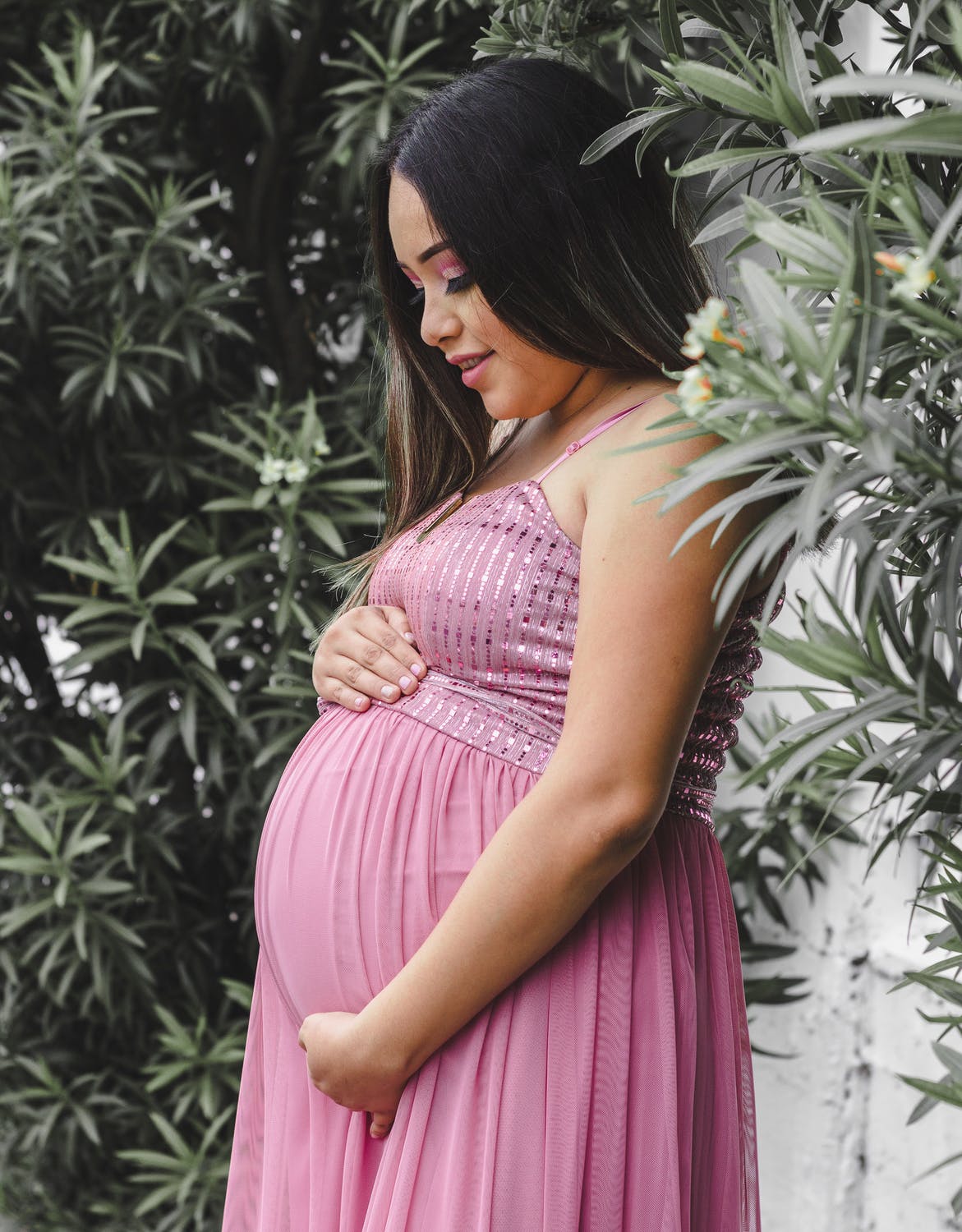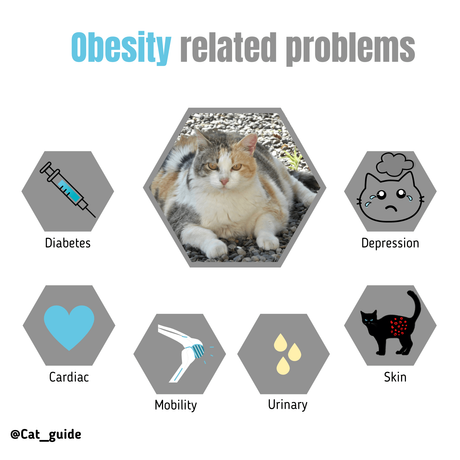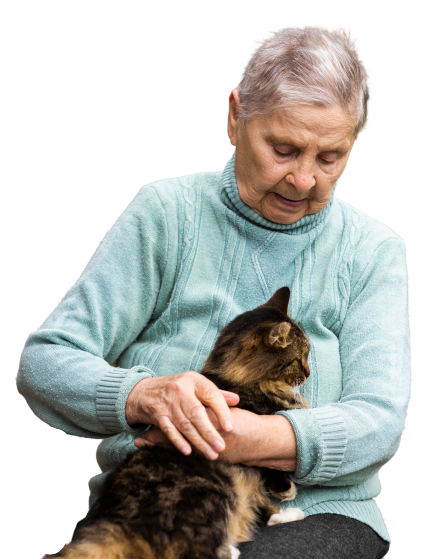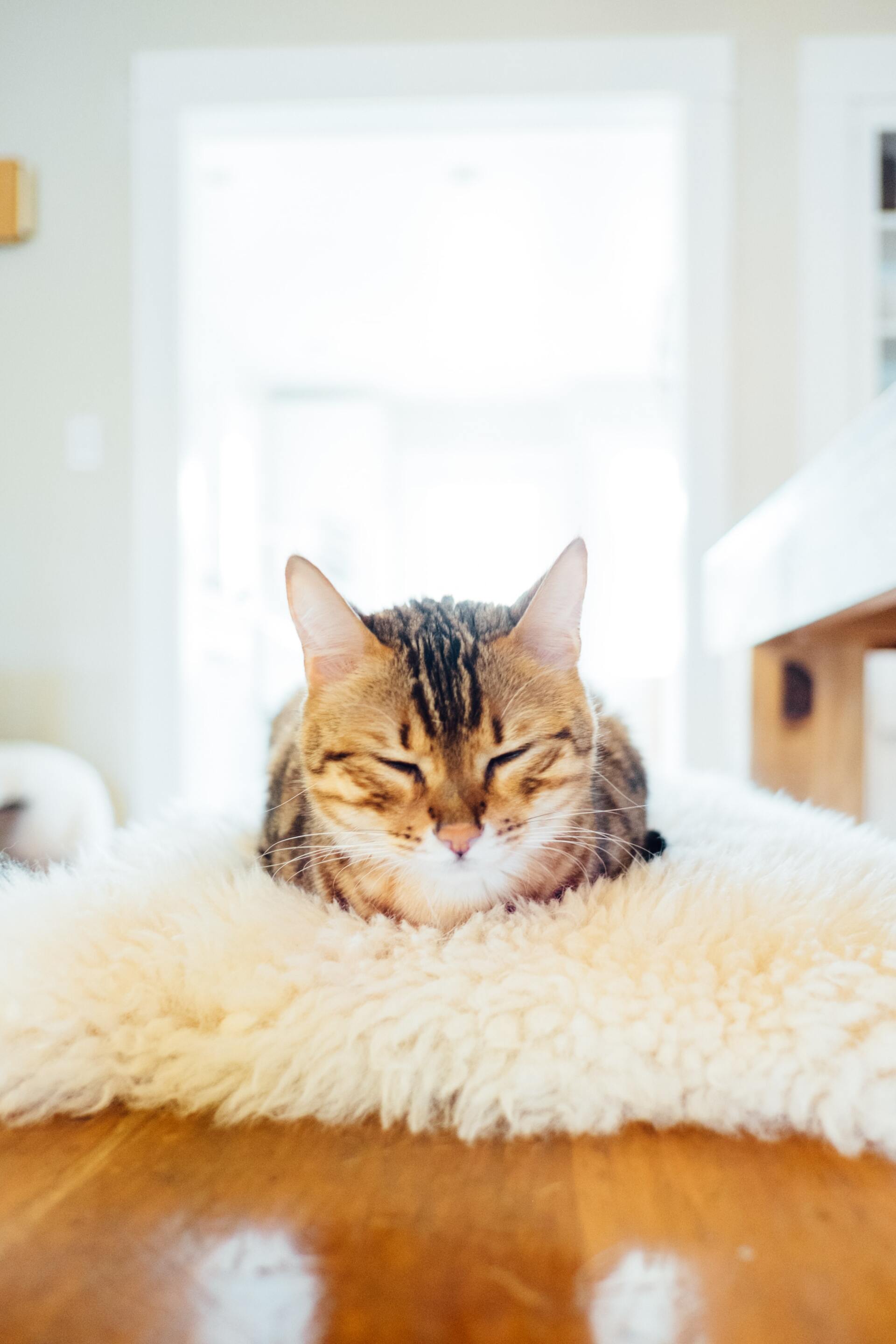Obesity in cats
- Preexisting health problems: ie: degenerative joint disease = reduced activity.
- Neutering: increase of food intake and decreasing physical activity (3, 4).
- Household Factors: ie: multicat houses and stress/resources competition. Other animal's food.
- Dietary factors
- Human physical and emotional status: The owners of obese cats tend to over-humanize them and use their cats as a substitute for human companionship (5). They also play less with their cats and instead use food as a reward.
- Lifestyle management
- Appropriate diet
- Playing: Wand toys, balls, tunnels, interactive toys (the cat can play alone). Not recommended laser pointers!
- Feeding: Puzzle feeders for dry food, lick mats for wet food, scattering food on the floor, or throwing one biscuit at the time, to encourage the cat moving to eat. Hiding the food around the house, it improves the mental health and keeps the cat busy and active.
- Environment:
- catios/ protected gardens
- Elevated locations around the house: cat trees and perches.
-Metabolic/ endocrine diseases such as diabetes
- Cardiovascular problems
- Joint and mobility problems
- Urinary problems such as crystals
- Skin problems as they can’t reach themselves to groom
- Depression!!! A hunter, active animal not able to move or play, it is so sad.
If you have an obese cat, look for help! Losing weight is a long process but it is totally worth it!
Have a nice week and stay safe 🙏
Remember to subscribe to our
MeowsLetter :)
References:
1. Kopelman PG. Obesity as a medical problem. Nature. 2000;404:635–643.
2. German AJ. The growing problem of obesity in dogs and cats. J Nutr. 2006;136(suppl 7):1940S–1946S.
3. Flynn MF, Hardie EM, Armstrong PJ. Effect of ovariohysterectomy on maintenance energy requirements in cats. J Am Vet Med Assoc. 1996;9:1572–1581.
4. Harper EJ, Stack DM, Watson TD, Moxham G. Effect of feeding regimens on body weight, composition and condition score in cats following ovariohysterectomy. J Small Anim Pract. 2001;42:433–438.
5. Kienzle E, Bergler R. Human-animal relationship of owners of normal and overweight cats. J Nutr. 2006;136(suppl 7):1947S–1950S.
6. Deagle G, Holden SL, Biourge V, et al. Investigating long- term outcomes of weight management in obese cats. In Proceedings of the WALTHAM International Nutritional Sciences Symposium 2013: from pet food to pet care: bridging the gap, p. 49.
7. Kirk CA, Debraekeleer J, Armstrong PJ. Normal cats. In: Small animal clinical nutrition. 4th edition. Marceline, Missouri: Mark Morris Institute, 2000:291-320.
8. Bissot T, Servet E, Vidal S, et al. Novel dietary strategies can improve the outcome of weight loss programmes in obese client-owned cats. J Feline Med Surg. 2010;12:104–112.
9. Cameron KM, Morris PJ, Hackett RM, Speakman JR. The effects of increasing water content to reduce the energy den- sity of the diet on body mass changes following caloric restriction in domestic cats. J Anim Physiol Anim Nutr. 2011;95:399–408.
10. Alexander JE, Colyer A, Morris PJ. The effect of reducing die- tary energy density via the addition of water to dry diet, on body weight, energy intake and physical activity in adult neu- tered cats. In Proceedings of the WALTHAM International Nutritional Sciences Symposium 2013: from pet food to pet care: bridging the gap, p. 50.












